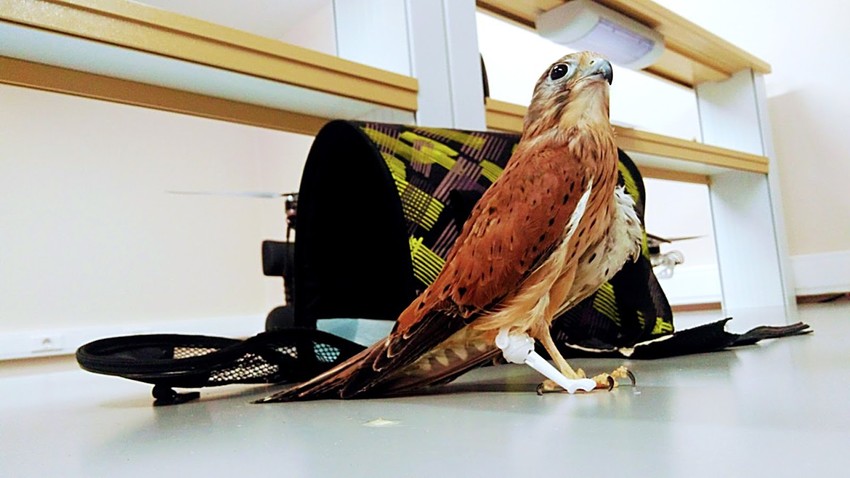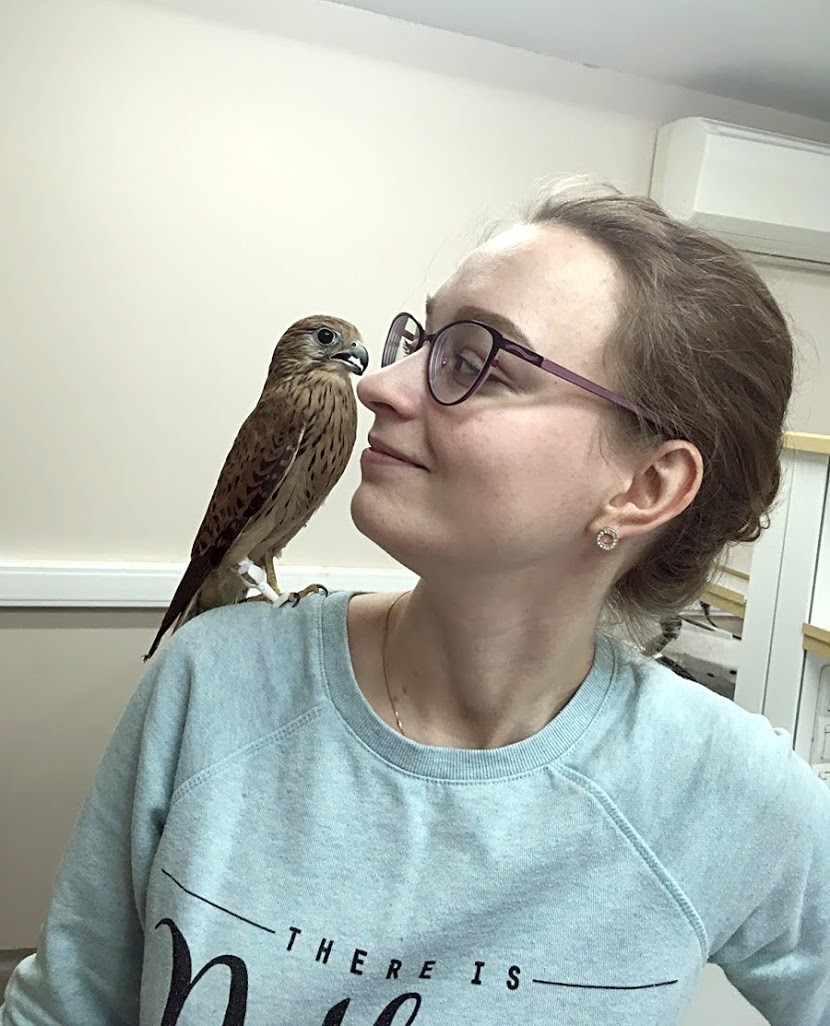
Millions of birds are killed or injured by vehicles every year; 80 million die in the U.S. alone, including endangered species. Why can’t they fly away? According to research, their cognitive mechanism for evaluating danger can break down when the car is driving too slow.
Apparently, that’s what happened to a female falcon in Siberia, but luckily it was rescued by the local Center for Wild Bird Rehabilitation. The bird was treated for injuries and named Grom (“thunder” in Russian). The falcon, however, was unable to stand, or mate.

The Center approached Rusnano, the Russian government-sponsored corporation and a co-investor in nanotechnology projects. As a result, three startups decided to help.
Siberian drone developer Optiplane measured the falcon and prepared a design. Two other companies, the protheses manufacturer 3D-Bimimplant, and 3D printing company CML AT, created an artificial leg.

According to Kirill Yakovchenko, head of Optiplane, this wasn’t a standard situation, but developers decided to complete the task with the same technological approach they use when working with drones.
“The falcon feels great, and we are monitoring its health condition,” said Yakovchenko, adding that Optiplane plans to work with other injured birds in the future.
If using any of Russia Beyond's content, partly or in full, always provide an active hyperlink to the original material.
Subscribe
to our newsletter!
Get the week's best stories straight to your inbox